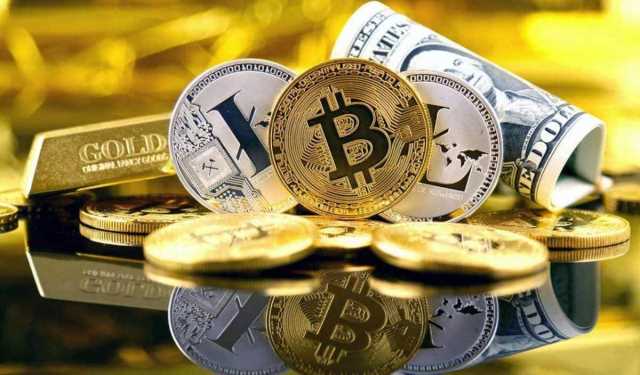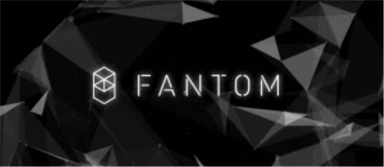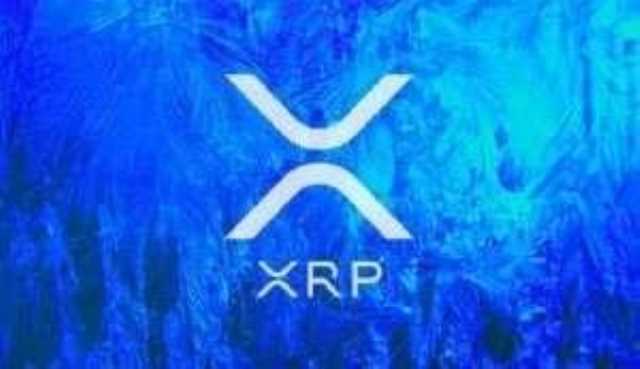A study by Chainalysis found that whitelisted users who resold their NFTs made a profit 75 percent of the time, versus 20 percent of the time for nonwhitelisted users. (And maybe it will turn out not to be!) But people who are into NFTs think that this idea of being able to claim ownership of digital files is a radically important concept. For gaming, non-fungible tokens could be used to represent in-game items like skins, potentially allowing them to be ported to new games or traded with other players. Even payments giant Visa has got in on the action, snapping up CryptoPunk #7610 as part of its collection of “historic commerce artefacts”. Non-fungible tokens can be purchased on a huge number of NFT marketplaces, including OpenSea, Rarible, and SuperRare. Tokens like Bitcoin and Ethereum-based ERC-20 tokens are fungible.
How to buy NFT tokens
The trading volume for non-fungible tokens hit $10.67 billion in Q3 2021, an increase of 700% from the previous quarter. Typically, non-fungible tokens are not divisible, in the same way that you cannot send someone part of a concert ticket; part of a concert ticket wouldn’t be worth anything on its own and would not be redeemable. However, in recent months some investors have experimented with the concept of fractionalized NFTs, though they remain a legal grey area and could be seen as securities. You can send someone one Bitcoin and they can send one back, and you still have one Bitcoin. If you contribute to ethereum.org, you can claim a POAP NFT. David Gerard, author of Attack of the 50-foot Blockchain, said he saw NFTs as buying “official collectables”, similar to trading cards.
How Do NFTs Work?
Traditional databases, on the other hand, are typically controlled by a central authority. Sensitive data may be managed and maintained by an organization or administrator. These rules and variations make it possible to create thousands of unique avatars from a little over a hundred elements. Programmatically generated NFTs are similar to randomizing a character when playing a role-playing video game (RPG).
What is an NFT platform?
Two NFTs from the same blockchain can look identical, but they are not interchangeable. Currently, NFTs find themselves snowed in during a “crypto winter,” a deeply skeptical cryptocurrency market that’s cooled off from the how do you journalize a bank statement highs of early 2022. After billions of dollars’ worth of losses and theft, and the collapse of some of cryptocurrencies’ biggest companies, regulators around the world are working through how to classify and tax the assets.
The “non-fungible” part of the name means they are not mutually interchangeable and cannot be replaced or exchanged with one another. That sets them apart from fungible “tokens” such as cryptocurrency (and even traditional currency) that can be exchanged for one another. Experts suggest that NFTs can be a good investment because you can resell them for profit. Several NFT marketplaces allow sellers to get royalties for their sold assets. However, proper research is necessary before investing so that you can gauge whether it suits your demands. Most non-fungible tokens can be purchased with Ether only.
What is considered one of the largest NFT scams was a rug pull scheme in 2022. Le Anh Tuan was charged by the Department of Justice with conspiracy to commit wire fraud and conspiracy to commit international money laundering on June 30, 2022. Like, nobody is using NFTs in video games — they’re just buying them and hoping the price goes up.
You can buy crypto using a credit card on platforms like Coinbase, Kraken, eToro and even PayPal and Robinhood now. Physical money and cryptocurrencies are “fungible,” meaning they can be traded or exchanged for one another. They’re also equal in value—one dollar is always worth another dollar; one Bitcoin is always equal to another Bitcoin.
You can also check out the best bitcoin wallets to securely store your digital assets. Further application of non-fungible tokens could include certification for qualifications, software licensing, warranties, and even birth and death certificates. The smart contract of a non-fungible token immutably proves the identity of the recipient or owner and could be stored in a digital wallet for ease of access and representation. One day, our digital wallets could contain proof of every certificate, license, and asset, we own. NFT collectibles like CryptoPunks and Bored Apes are one thing, but non-fungible tokens have a wide variety of applications—one of which is to represent digital objects in video games. And the biggest NFT video game around right now is Axie Infinity, which became the most traded NFT collection ever in Q3 2021, with trading volumes over $2.5 billion.
All the NFT buyer got, in essence, was an “official” copy of the image that was cryptographically signed by Mr. Torres. In addition, many projects are corrupted by a practice called “whitelisting,” in which certain people are invited to buy their NFTs before they’re available to the general public. Whitelisting means that many profits flow to well-connected insiders, who get their NFTs at a discount and can sell them for more once they’re released publicly.
Buyer protections appear to be sparse at best, so when shopping for NFTs, it may be best to keep the old adage “caveat emptor” (let the buyer beware) in mind. Essentially, NFTs are like physical collector’s items, only digital. So instead of getting an actual oil painting to hang on the wall, the buyer gets a digital file instead. Not only that, it contains built-in authentication, which serves as proof of ownership. Collectors value those “digital bragging rights” almost more than the item itself.
- (And a substantial chance you won’t.) Any digital file, more or less, can be turned into an NFT.
- For instance, artists can sign their artwork by including their signature in the file.
- They can also sell individual digitals items they accrue during gameplay such as costumes, avatars and in-game currency on a secondary market.
- Blockchain technology and NFTs afford artists and content creators a unique opportunity to monetize their wares.
- The sale set a precedent and record for the most expensive digital art sold at the time.
- The Taxpayer Relief Act of 1997 lowered the maximum capital gains rate on proceeds from the sale of most assets to 20%, but left the maximum rate of 28% on gains from the sale of collectibles.
Despite their similarities, cryptocurrency and NFTs are not the same thing. Cryptocurrency is, however, a digital currency used for trading NFTs. The primary difference between cryptocurrency and NFTs lies in their value.
Next week, Christie’s will finish a 14-day, online sale of a piece by the digital artist Beeple. The starting bid for his work, a virtual collage of pictures from his life taken over 5,000 consecutive days, was $100 and has since surpassed $1 million. For a seller, NFTs make it not only possible to sell something today, but also to keep earning tomorrow. Artists in particular have historically struggled to reap rewards if their work appreciates in value.
But the NFT market appears to be cooling off these days, with falling transaction values and canceled auctions of high-dollar NFTs. Even some zealous NFT supporters are worried that the market has gotten oversaturated. Gary Vaynerchuk, the online marketer and a NFT mogul himself, recently predicted that 98 percent of NFTs would lose money. The internet essentially works like a giant copy machine — any digital file can be duplicated an infinite number of times, and every copy is exactly the same as the original. The game itself is a Pokémon-style affair that sees you collecting cute monsters called Axies, pitting them against each other in battles, and breeding them to create new Axies.
NFTs can also contain smart contracts that may give the artist, for example, a cut of any future sale of the token. Non-fungible tokens (NFT) have become hugely popular with crypto users and companies alike because of the way they revolutionized the gaming and collectibles space. Since June https://cryptolisting.org/ 2017 there has been a total of $25 billion spent on NFTs, including a further $21 billion in secondary sales. Non-fungible tokens are also very limited by their liquidity. They attract a specific audience of collectors or buyers because they are much more specific than cryptocurrencies.
This means that your parts of an NFT are treated equally and can all be exchanged for each other. Smart contracts deal with these tokens so that all owners can immediately see what happens to their parts of the NFT. Take notice of the date of the sale, the type of cryptocurrency required to buy an NFT, and the number of NFTs available for purchase. This way, you’ll know the actual value of your future asset and whether it’s sporadic. Tokens are also handy when it comes to proving your ownership.
Most often, an NFT contains a URL that links to the asset, which is stored on a separate computer network. From their environmental impact to how grifters are cashing in, here’s what you should know about non-fungible tokens. Robyn Conti is a freelance financial writer based in Los Angeles, CA.
Big money was accompanied by ever-bigger names, as artists and celebrities rode the wave of enthusiasm for NFTs. One example of how NFTs are being used in DeFi is Aavegotchi, an experimental startup funded by DeFi money market Aave. Aavegotchis are NFT crypto-collectibles used in a game universe; every Aavegotchi also has Aave’s aTokens staked inside them as collateral, meaning that each one generates yield on Aave.
We can anticipate a future where NFTs become increasingly integrated into our everyday lives, enabling new forms of digital ownership, creativity, and value exchange. Although non-fungible tokens are widely regarded as a new technology, the first NFT was minted in 2014 by digital artist Kevin McCoy and tech entrepreneur Anil Dash. You can trace the origins of NFTs even further back to 2012 when Meni Rosenfeld published the “Colored Coins” whitepaper. “Colored Coins” describes the methodology for representing and managing the ownership of real-world assets on a blockchain. They can represent everything from virtual land parcels to artworks, to ownership licenses.
Sorry, I was busy right-clicking on that Beeple video and downloading the same file the person paid millions of dollars for. Well, they’re pretty complex, but the basic idea is that blockchains are a way to store data without having to trust any one company or entity to keep things secure and accurate. There are definitely nuances and exceptions there, which you can read about in our blockchain explainer, but when most people say “blockchain,” that’s the kind of tech they’re talking about. “Non-fungible” more or less means that it’s unique and can’t be replaced with something else. For example, a bitcoin is fungible — trade one for another bitcoin, and you’ll have exactly the same thing.
- Post Date: 30 Nov, 2022



